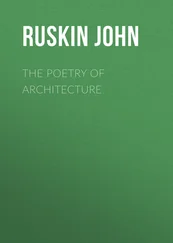John Ruskin - On the Old Road Vol. 1 (of 2)
Здесь есть возможность читать онлайн «John Ruskin - On the Old Road Vol. 1 (of 2)» — ознакомительный отрывок электронной книги совершенно бесплатно, а после прочтения отрывка купить полную версию. В некоторых случаях можно слушать аудио, скачать через торрент в формате fb2 и присутствует краткое содержание. Жанр: foreign_antique, foreign_home, literature_19, visual_arts, на английском языке. Описание произведения, (предисловие) а так же отзывы посетителей доступны на портале библиотеки ЛибКат.
- Название:On the Old Road Vol. 1 (of 2)
- Автор:
- Жанр:
- Год:неизвестен
- ISBN:нет данных
- Рейтинг книги:3 / 5. Голосов: 1
-
Избранное:Добавить в избранное
- Отзывы:
-
Ваша оценка:
- 60
- 1
- 2
- 3
- 4
- 5
On the Old Road Vol. 1 (of 2): краткое содержание, описание и аннотация
Предлагаем к чтению аннотацию, описание, краткое содержание или предисловие (зависит от того, что написал сам автор книги «On the Old Road Vol. 1 (of 2)»). Если вы не нашли необходимую информацию о книге — напишите в комментариях, мы постараемся отыскать её.
On the Old Road Vol. 1 (of 2) — читать онлайн ознакомительный отрывок
Ниже представлен текст книги, разбитый по страницам. Система сохранения места последней прочитанной страницы, позволяет с удобством читать онлайн бесплатно книгу «On the Old Road Vol. 1 (of 2)», без необходимости каждый раз заново искать на чём Вы остановились. Поставьте закладку, и сможете в любой момент перейти на страницу, на которой закончили чтение.
Интервал:
Закладка:
32. In the chapter on the "Influence of Habit and Religion," of Mr. Hope's Historical Essay, 7 7 "An Historical Essay on Architecture" by the late Thomas Hope. (Murray, 1835) chap, iv., pp. 23-31.
the reader will find further instances of the same feeling, and, bearing immediately on our present purpose, a clear account of the derivation of the Egyptian temple from the excavated cavern; but the point to which in all these cases we would direct especial attention, is, that the first perception of the great laws of architectural proportion is dependent for its acuteness less on the æsthetic instinct of each nation than on the mechanical conditions of stability and natural limitations of size in the primary type, whether hut, châlet, or tent.
As by the constant reminiscence of the natural proportions of his first forest-dwelling, the Greek would be restrained from all inordinate exaggeration of size—the Egyptian was from the first left without hint of any system of proportion, whether constructive, or of visible parts. The cavern—its level roof supported by amorphous piers—might be extended indefinitely into the interior of the hills, and its outer façade continued almost without term along their flanks—the solid mass of cliff above forming one gigantic entablature, poised upon props instead of columns. Hence the predisposition to attempt in the built temple the expression of infinite extent, and to heap the ponderous architrave above the proportionless pier.
33. The less direct influences of external nature in the two countries were still more opposed. The sense of beauty, which among the Greek peninsulas was fostered by beating of sea and rush of river, by waving of forest and passing of cloud, by undulation of hill and poise of precipice, lay dormant beneath the shadowless sky and on the objectless plain of the Egyptians; no singing winds nor shaking leaves nor gliding shadows gave life to the line of their barren mountains—no Goddess of Beauty rose from the pacing of their silent and foamless Nile. One continual perception of stability, or changeless revolution, weighed upon their hearts—their life depended on no casual alternation of cold and heat—of drought and shower; their gift-Gods were the risen River and the eternal Sun, and the types of these were forever consecrated in the lotus decoration of the temple and the wedge of the enduring Pyramid. Add to these influences, purely physical, those dependent on the superstitions and political constitution; of the overflowing multitude of "populous No"; on their condition of prolonged peace—their simple habits of life—their respect for the dead—their separation by incommunicable privilege and inherited occupation—and it will be evident to the reader that Lord Lindsay's broad assertion of the expression of "the Ideal of Sense or Matter" by their universal style, must be received with severe modification, and is indeed thus far only true, that the mass of Life supported upon that fruitful plain could, when swayed by a despotic ruler in any given direction, accomplish by mere weight and number what to other nations had been impossible, and bestow a pre-eminence, owed to mere bulk and evidence of labor, upon public works which among the Greek republics could be rendered admirable only by the intelligence of their design.
34. Let us, for the present omitting consideration of the debasement of the Greek types which took place when their cycle of achievement had been fulfilled, pass to the germination of Christian architecture, out of one of the least important elements of those fallen forms—one which, less than the least of all seeds, has risen into the fair branching stature under whose shadow we still dwell.
The principal characteristics of the new architecture, as exhibited in the Lombard cathedral, are well sketched by Lord Lindsay:—
"The three most prominent features, the eastern aspect of the sanctuary, the cruciform plan, and the soaring octagonal cupola, are borrowed from Byzantium—the latter in an improved form—the cross with a difference—the nave, or arm opposite the sanctuary, being lengthened so as to resemble the supposed shape of the actual instrument of suffering, and form what is now distinctively called the Latin Cross. The crypt and absis, or tribune, are retained from the Romish basilica, but the absis is generally pierced with windows, and the crypt is much loftier and more spacious, assuming almost the appearance of a subterranean church. The columns of the nave, no longer isolated, are clustered so as to form compound piers, massive and heavy—their capitals either a rude imitation of the Corinthian, or, especially in the earlier structures, sculptured with grotesque imagery. Triforia, or galleries for women, frequently line the nave and transepts. The roof is of stone, and vaulted. The narthex, or portico, for excluded penitents, common alike to the Greek and Roman churches, and in them continued along the whole façade of entrance, is dispensed with altogether in the oldest Lombard ones, and when afterwards resumed, in the eleventh century, was restricted to what we should now call Porches, over each door, consisting generally of little more than a canopy open at the sides, and supported by slender pillars, resting on sculptured monsters. Three doors admit from the western front; these are generally covered with sculpture, which frequently extends in belts across the façade, and even along the sides of the building. Above the central door is usually seen, in the later Lombard churches, a S. Catherine's-wheel window. The roof slants at the sides, and ends in front sometimes in a single pediment, sometimes in three gables answering to three doors; while, in Lombardy at least, hundreds of slender pillars, of every form and device—those immediately adjacent to each other frequently interlaced in the true lover's knot, and all supporting round or trefoliate arches—run along, in continuous galleries, under the eaves, as if for the purpose of supporting the roof—run up the pediment in front, are continued along the side-walls and round the eastern absis, and finally engirdle the cupola. Sometimes the western front is absolutely covered with these galleries, rising tier above tier. Though introduced merely for ornament, and therefore on a vicious principle, these fairy-like colonnades win very much on one's affections. I may add to these general features the occasional and rare one, seen to peculiar advantage in the cathedral of Cremona, of numerous slender towers, rising, like minarets, in every direction, in front and behind, and giving the east end, specially, a marked resemblance to the mosques of the Mahometans.
"The Baptistery and the Campanile, or bell-tower, are in theory invariable adjuncts to the Lombard cathedral, although detached from it. The Lombards seem to have built them with peculiar zest, and to have had a keen eye for the picturesque in grouping them with the churches they belong to.
"I need scarcely add that the round arch is exclusively employed in pure Lombard architecture.
"To translate this new style into its symbolical language is a pleasurable task. The three doors and three gable ends signify the Trinity, the Catherine-wheel window (if I mistake not) the Unity, as concentrated in Christ, the Light of the Church, from whose Greek monogram its shape was probably adopted. The monsters that support the pillars of the porch stand there as talismans to frighten away evil spirits. The crypt (as in older buildings) signifies the moral death of man, the cross, the atonement, the cupola heaven; and these three, taken in conjunction with the lengthened nave, express, reconcile, and give their due and balanced prominence to the leading ideas of the Militant and Triumphant Church, respectively embodied in the architecture of Rome and Byzantium. Add to this, the symbolism of the Baptistery, and the Christian pilgrimage, from the Font to the Door of Heaven, is complete,"—Vol. ii., p. 8-11.
Читать дальшеИнтервал:
Закладка:
Похожие книги на «On the Old Road Vol. 1 (of 2)»
Представляем Вашему вниманию похожие книги на «On the Old Road Vol. 1 (of 2)» списком для выбора. Мы отобрали схожую по названию и смыслу литературу в надежде предоставить читателям больше вариантов отыскать новые, интересные, ещё непрочитанные произведения.
Обсуждение, отзывы о книге «On the Old Road Vol. 1 (of 2)» и просто собственные мнения читателей. Оставьте ваши комментарии, напишите, что Вы думаете о произведении, его смысле или главных героях. Укажите что конкретно понравилось, а что нет, и почему Вы так считаете.












